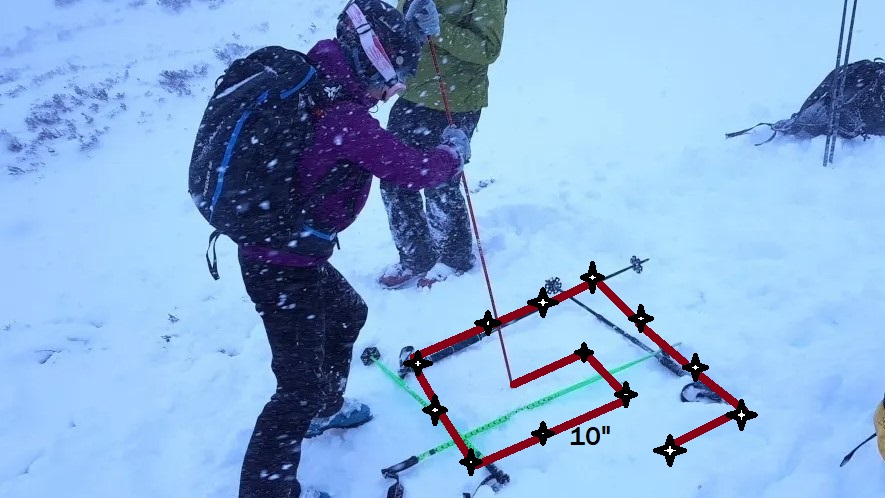A systematic search for a probe strike after your transceiver search leads you to the closest signal.
Start probing from the point where you marked the lowest distance reading from your transceiver search. If you don’t immediately strike the buried victim, continue probing in an expanding box formation with 10” spacing. Move the probe 10” forward and probe again. If no strike, probe to the right 10”, and then back toward you 10”. Continue this expanding box formation with 10” between probe locations until you feel a positive probe strike. Probe perpendicular to the slope and feel for a softer, squishier probe strike to identify the buried victim. The depth markings on the probe should roughly correspond to the lowest distance on your transceiver. Another clue for verifying a positive probe strike is to compare it with the depth of surrounding strikes. Generally, a buried victim won’t be as deep as the surrounding ground beneath the avalanche debris. For burials deeper than your probe length, you will have to excavate snow to get a probe strike. It’s helpful to rebracket with your beacon between excavations of about a meter deep.
